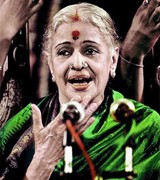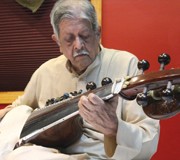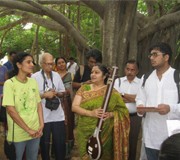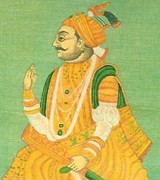COVER STORY
The MS century
V. RAMNARAYAN

Listening to M.S. Subbulakshmi the first time has been a sensational experience for many, in quite a few different ways as she grew up from being a bright young talent that stole the hearts of the most hardened bhagavatars of the day, to the grand old lady of Carnatic music that she became in her evening years. In the 1950s, hers was a pellucid, piercing voice that still had a certain girlish quality about it. Grand old masters of the genre had already commended her understanding of raga and mastery of swara, not stopping with marvelling at the God-given gift of a flawless voice, with its almost intuitively perfect alignment with sruti. Thunderous applause poured forth with Pavlovian inevitability every time she struck the high notes of a Kalyani or a Mohanam.
Unfortunately her vocal gifts were in time to bring her down in the estimation of the so-called knowledgeable section of the population. She was already a Sangita Kalanidhi when critics – that Martian tribe that disembarked on earth from outer space to uplift us ordinary mortals – began to attribute her success to the possession of that unearthly voice and not much else by way of gnanam or all-round mastery of her art, even as she strove to polish that gift into a shining asset, adding weight and depth to it in a manner no Carnatic musician before or since has quite been able to.
INTERVIEW
“Riyaz is not performance”
BUDDHADEV DAS GUPTA IN CONVERSATION WITH SHUCHITA RAO

Veteran sarod maestro Buddhadev Das Gupta has the unique distinction of balancing a successful career in engineering along with Hindustani classical music. A recipient of the Padma Bhushan award from the Government of India in 2012, he is one of the artists featured in The Raga Guide CD collection (Nimbus Records), an important learning resource for students of Hindustani music.
Well into his mid-eighties, the maestro, aided by his son and disciple Anirban Das Gupta, conducted a three-day workshop on Hindustani music for students at the LearnQuest Academy in Waltham, Massachusetts on 19, 22 and 24 July. He guided students of vocal music, sarod, sitar and electronic guitar on aspects of riyaz (regular music practice), the correct method of holding the instrument and spacing fingers while playing musical notes, and techniques for creating taans (quick melodic passages) in several ragas such as Jaijaivanti, Kedar, Malkauns, Chhaya Nat and Khamaj.
NEWS
CHENNAI ROUNDABOUT
Musical tree walks inform and delight
RAJANI ARJUN SHANKAR with inputs from R.K. SHRIRAMKUMAR

Across the world, the flora and fauna of a region become an integral part of the culture of the inhabitants. They influence the local food, materials used in daily living and even the idioms and metaphors that permeate the language of the people. These apart, the leaves, flowers, birds and animals become an inseparable part of arts and crafts like weaving, sculpture, painting, music and literature of the land.
Nizhal, a Chennai-based NGO, which works towards nurturing and promoting sensitive urban greening, has blazed a trail by linking the worlds of trees, literature and Carnatic music.
HERITAGE
A glimpse into Shahaji’s legacy
Saskia Kersenboom

A remarkable performance curated by Madhavi Rajagopalan and Nandini Ramani took place at Chennai’s Bharatiya Vidya Bhavan on 20 November 2014. They were the masterminds behind the resuscitation of exquisite samples of King Shahaji’s legacy – rare dance compositions on Lord Tyagaraja-swami by King Shahaji of Tanjavur. More than 300 years after his artistic labour, the music and dances performed during this evening were of a fresh, lyrical quality that touched the heart and brought Shahaji close to the audience as a bhakta, deeply in love with Sree Tyagesa at Tiruvarur.
The programme, supported by the Ministry of Culture, projected an important cause. Inspiration for music and dance can be found in many contemporary experiments, but equally pressing is continued ardour for treasures from the past. However, to display such a storehouse requires talent, training and dedicated patience. The two curators Madhavi Rajagopalan and Nandini Ramani, generously shared their traditional expertise.


